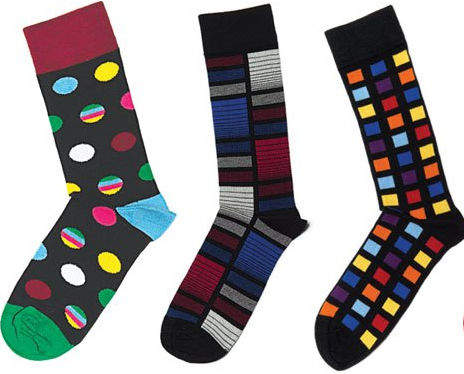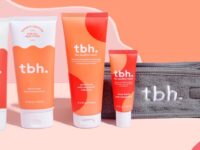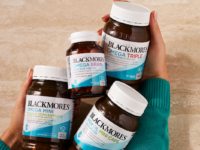 Smart brands are combining strong category gap analysis with creativity to drive innovation and win the hearts and minds of shoppers
Smart brands are combining strong category gap analysis with creativity to drive innovation and win the hearts and minds of shoppers
Three things have come across my newsfeed this week that got me thinking about the relationship between ‘left brain and right brain’ thinking in retail, thanks to my good friend Mark Fletcher, a consumer decision-making specialist and Director of ShopScience.
First, a story about Stance, a company that has managed to attract $86 million and some of the world’s biggest celebrities, by revolutionising the sock category. Second, a story about Apple and their clever accessory merchandising. And thirdly, a new research report in which almost half the women surveyed were buying products marketed to men, for their own use.
Different stories all, yet a commonality – the category gap. Where does innovation start? With the need that is not currently being met? Or by creating that need? The first two examples are companies that have done the latter. The research report demonstrates the former; a latent category gap that’s low-hanging fruit for new product development.
Knock your socks off
How boring are socks? It’s obvious, in hindsight, as things often are. The process that entrepreneur and investor Jeff Kearl employed to arrive at socks as his innovation focus is a classic category gap analysis story.
In an interview with Evie Nagy on fastcompany.com; Kearl says, “I literally went down to Target. Just started looking at categories. Maybe with a little bit of an MBA mindset, where I was like, ‘I’m going to draw a little two by two McKinsey matrix, in my head, of how these are positioned. I started with sunblock: Coppertone, Hawaiian Tropic. Where is this stuff made? What’s the gross margin? Who has what market share? It’s amazing what you can Google. I did it with school supplies, jewellery and lots of categories. When we looked at socks, it was like black, white, brown, gray, with some argyle on the bottom, in plastic bags and really inexpensive. It reminded me of when Skullcandy first started in 2003. The headphone aisle was all homogenised. It was black and silver, and all looked like consumer electronics. When Skullcandy came out with this clear packaging and these loud prints, it was so different from everything else. I thought, we could totally do that for socks, because everyone’s ignoring it.”
Kearl teamed up with consumer brand specialist John Wilson to create Stance six years ago. The company has gone on to raise $86 million in funding from A-list celebrities like Will Smith, release designer lines from celebrities such as Rihanna, and enjoy preferential distribution in 7500 retail outlets across the US.
Stance has driven innovation in the sock category through both functional and creative design; everything from how the fabric is knitted, to limited edition designer ‘mix and match’ one-sock prints around colourways and themes. Consequently, they’re able to charge $10-25 a pair in a category that’s driven by three for $5 in mass merchants. Brilliant.’
Different category, similar process
Meanwhile, Apple continues to differentiate through meeting consumer needs for simplicity, functionality and elegance in design; right through to visual merchandising in Apple stores, and accessories packaging.
Mathew Miller wrote the following for The Mobile Gadgeteer: “One of the reasons for Apple’s success in the mobile space is the retail store experience. New packaging requirements for third-party vendors will continue to improve this experience for customers. If you have spent time in an Apple Store you will notice that the packaging for official Apple products has changed over the years and is now very consistent with simple white packaging, clean fonts, and high quality materials. The new requirements for packaging will result in a reduction in the number of accessories. Apple has been working with a number of companies and according to an internal store notice, products from Tech21, Sena, Incase, Mophie, Logitech, and Life Proof will appear on shelves with the new packaging.”
Visitin an Apple store is quite the immersion in ‘The Apple Way’, and borders on a religious experience for some. Love it or hate it, it certainly works. Apple are the classic story of category gap analysis meeting inspired design, based around basic human needs.
Women buying men’s products
Lastly, I was reading this week about a research report entitled Does Gender Influence Shopping Behaviour, released by Interactions Marketing, and published via retailexperience.com. According to the report, “Despite several similarities between the two, male and female shoppers tend to exhibit some distinct differences when it comes to shopping. Research reveals 46 per cent of women surveyed purchase products marketed toward men for their own use, compared to only 25 per cent of men.
I’ve done it myself. I prefer the simple, functional, square packaging, scents that are not ‘too floral’, and products that are not trying to convince me to look 20 years younger than I am (what on earth for?).
So. Calling all personal care brands! Now there’s a category gap just screaming for a good marriage between needs analysis and creativity.
Lee McClymont is GM, ANZ of Popai and can be contacted on 0414 941 585.















